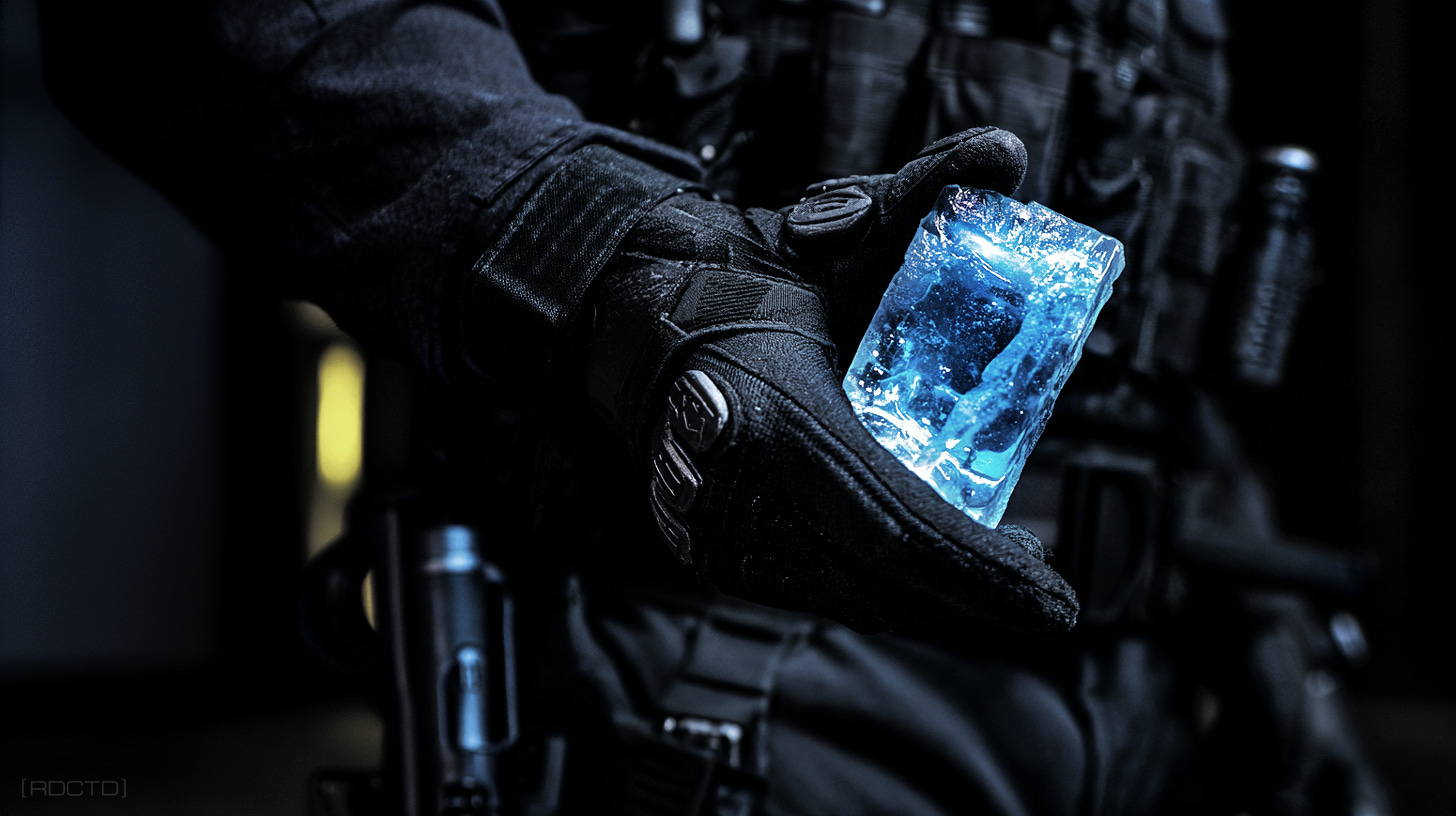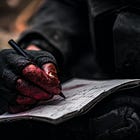Being Cold and Calculating (advanced tradecraft)
The Probabilistic Mindset
Stripping decisions down to probabilities, consequences, and leverage points - acting only on what maximizes advantage while discarding impulse and sentiment.
Being ‘cold and calculating’ doesn’t mean being unfeeling. It’s to develop controlled clarity under pressure so your judgments reflect likelihoods and payoffs rather than emotions or rhetoric.
For an operative, this is separating signal from noise. You see uncertainty as a quantifiable feature of any situation, not as a moral failing or a reason to freeze. That mental distance is tradecraft - an intentional stance you take where emotion becomes data you monitor rather than the motor that drives decisions.
Cold calculation is the act of reducing chaos into ratios.
A probabilistic mindset rests on a few simple but powerful habits.
Start with priors by establishing the baseline likelihood of an outcome based on history, precedent, and base rates, rather than relying on instinct or anecdote.
From there, practice Bayesian updating - when new evidence arrives, adjust your confidence proportionally to how diagnostic that evidence is, instead of discarding old information or overvaluing the latest input.
Think in expected value by multiplying probabilities by consequences to see the true weight of an outcome, and use predefined thresholds to decide when action is justified, rather than acting impulsively.
Work with ranges and confidence intervals instead of single-point predictions. What matters is not just the “most likely” result, but also the plausible alternatives and the worst reasonable case, so you can triage your response and allocate resources accordingly.
This kind of thinking forces you to prepare layered contingencies rather than a single plan, which in turn makes you resilient to surprise.
Operating this way builds a mental map of uncertainty where decisions feel less like leaps of faith and more like controlled wagers.
LAYMAN’S: Start with the odds you already know, then update them as new information comes in. Don’t throw away what you knew before just because something new appeared, blend both. Always weigh risk by multiplying the chance of something happening by how bad or good the outcome would be. Don’t think in terms of “yes or no,” but in terms of ranges - likely, possible, and worst-case. That way, you’ve got more than one plan ready, and you won’t be paralyzed when the unexpected happens. This turns decisions from risky guesses into informed bets you can live with.
To be cold and calculated is not a mask, it’s a framework. Behind it, you remain human. But when the pressure is crushing and the noise deafening, the framework carries you through - steady, precise, and unshaken.
Bias management is operationally critical because unchecked bias can be as dangerous as bad intelligence.
Actively monitor for common cognitive pitfalls (confirmation bias, availability effects, and overconfidence being the most frequent) and design deliberate countermeasures like forced alternative hypotheses, devil’s advocacy sessions, and pre-commitment rules to limit drift.
Treat your emotions as another input channel rather than a compass. Anxiety might signal an undervalued risk, while excitement could indicate you’re leaning into wishful thinking instead of sober assessment.
When the stakes are high, install a deliberate pause or a rapid checklist to translate instinctive reactions into explicit assumptions you can actually test against reality.
Over time, you’ll recognize which biases you’re most prone to and can build personal heuristics or safeguards tailored to your weaknesses.
The operative who can see their own mind as terrain to navigate gains as much of an edge as one who knows the physical ground better than the opposition.
LAYMAN’S: Your brain will try to trick you, and that can be as dangerous as bad intel. Watch for common traps - like only seeing evidence that confirms your view, overestimating recent events, or being too sure of yourself. Build habits to fight these, like forcing yourself to consider the opposite case, having someone challenge your plan, or setting rules before emotions cloud your judgment. Use your feelings as signals, not orders. Fear may point to a real risk, and excitement may mean you’re blinded by hope. When the pressure’s high, pause long enough to put gut reactions into clear assumptions you can test. You’ll spot your own weak points and build safeguards against them, just as you’d memorize terrain before moving through it.
Probability is the closest thing to foresight we’re allowed. It doesn’t predict the future, but it weights it in our favor if we respect its limits.
Use decision frameworks that scale with consequence, matching the weight of the choice to the rigor of the process.
For low-cost or reversible decisions, quick heuristics and satisficing are efficient, preserving mental bandwidth for matters that truly demand it.
For high-cost, high-stakes choices, construct simple decision trees, calculate expected utilities, and establish “kill switches” or stop-loss thresholds that prevent you from bleeding resources into a losing position.
Employ red-team thinking before execution to expose tail risks and unlikely but catastrophic failure modes, and set predefined criteria for escalation or withdrawal so you’re not improvising under emotional pressure.
Calibration - matching your stated confidence to your actual hit rate over time - is a metric you can train, track, and refine like any other operational skill. The more you measure your accuracy, the sharper your intuition becomes, and eventually your “gut” is less guesswork and more a reflection of tested probabilities.
This layered approach ensures your decision cycle remains disciplined, scalable, and resistant to both bias and panic.
LAYMAN’S: Make your decision process match the size of the decision. If it’s cheap or easy to undo, don’t waste time - use shortcuts and move on. If it’s costly or irreversible, slow down: map out options, weigh risks against payoffs, and set clear lines where you’ll cut losses if things turn bad. Before you act, challenge your plan by looking for unlikely but dangerous failures, and decide in advance when to push forward or when to pull back so emotions don’t take over midstream. Track how often your confidence matches reality, because accuracy improves only when you measure it. This makes your gut smarter - less guesswork, more tested instinct.
Most people mistake decisiveness for speed; in reality, decisiveness is the ability to weigh uncertainty faster than others can recognize it exists.
Train the “muscle” relentlessly, because probabilistic thinking only becomes instinctive through repetition under pressure.
Run table-top exercises, scenario simulations, and rapid-fire decision drills where feedback is immediate and brutally honest, so you can’t hide behind rationalizations or hindsight excuses.
Keep a compact post-action log after each exercise or real-world decision. Note the assumptions you held at the outset, the data you encountered, how you updated your assessment, and the final outcome.
Over time, this record-keeping builds both accountability and a personal archive of lessons that sharpen your judgment. With enough cycles, you’ll start to see recurring patterns, gaining a mental library of calibrated priors that improves your decision speed without sacrificing accuracy.
This is tradecraft for the mind - an ongoing training program that transforms abstract probability into applied intuition. Allowing you to act with precision and restraint instead of relying on raw instinct or cold detachment.
It’s to ensure that emotion never overrides the math.
LAYMAN’S: You’ve got to practice until thinking in probabilities becomes automatic. Run drills, war-games, and fast decision exercises where you get immediate, honest feedback - no excuses, no sugar-coating. After each run, write down what you believed, what new info came in, how you changed your thinking, and what actually happened. Over time, this builds a personal playbook that sharpens your judgment and speeds up your reactions without losing accuracy. Eventually, you’ll start to spot patterns others miss, and your “gut” will be based on tested experience instead of raw instinct.
The mind trained in probability stops fearing uncertainty. It accepts the fog, charts it, and then uses that map of unknowns as a weapon against those who still stumble blindly through it.
Cold calculation needs ethical grounding.
Being ruthless in analysis shouldn’t become ruthlessness toward people. Operatives who couple probabilistic rigor with restraint, humility, and clear rules of engagement tend to be the most effective.
They act decisively when math and ethics align, and they step back when the probabilities and the consequences suggest restraint.







Excellent material here! Thank you so much.